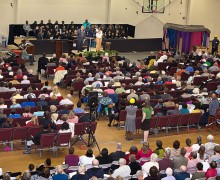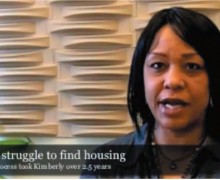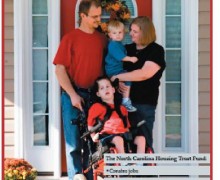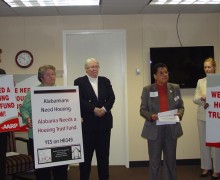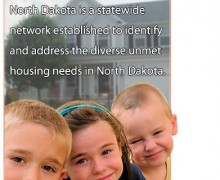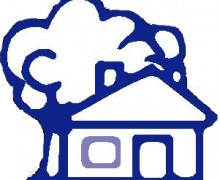North Dakota Creates State Housing Trust Fund
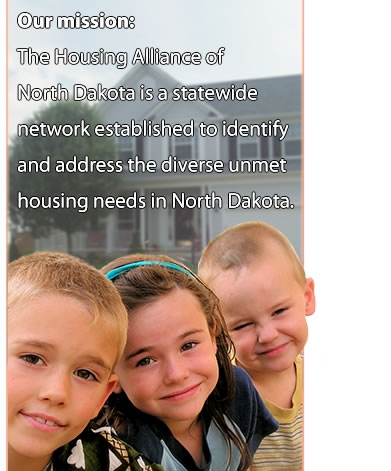
North Dakota is the 42nd state in the country to create a state housing trust fund. Governor Jack Dalrymple signed the bill in April 2011. The North Dakota Housing Incentive Fund is a victory for the Housing Alliance of North Dakota (HAND). HAND’s vision is for North Dakota to become a state where everyone has access to a decent, safe, affordable, accessible place to live.
HAND is independent and private in its operation, allowing it to work in a nonpartisan manner to achieve its goals. HAND is a coalition of advocates and individuals who have an interest in housing issues and in working together under the principle that housing is a basic human need. Representatives from twenty-five different agencies and organizations sit on HAND’s Steering Committee. HAND’s objective is to address unmet housing needs for all populations, in all areas of the state.
North Dakota’s is experiencing insufficient housing for working people in parts of the state, where housing is at a premium. As a consequence, long-time residents who are on fixed incomes are being priced out of the market. The state needs housing for its workforce, but it also needs to maintain decent, affordable, accessible housing for retired people and people with disabilities.
HAND worked with lawmakers to establish the trust fund to enhance affordable housing options and address critical housing needs for low income people throughout the state. Senate Bill 2210 created a Housing Incentive Fund to be administered by the North Dakota Housing Finance Agency (NDFHA).
Michael Anderson, Executive Director of the North Dakota Housing Finance Agency looks forward to launching the Fund, “We are pleased to have this new tool to help overcome obstacles in developing desperately needed affordable housing in North Dakota. The Housing Incentive Fund is an innovative concept and will help us towards our mission of providing housing for families of modest means and to address the housing challenges of our developing communities. We appreciate the willingness and foresight of the legislators and governor for giving us this tool at time when affordable and accessible housing is in high demand. As we await this law going into effect, we are very busy in drafting marketing and allocation plans to make the greatest use of this resource.”
The bill gives contributors (individual or corporate taxpayers) to the Housing Incentive Fund a 100 percent tax credit which can be taken over a five- year span. The aggregate amount of tax credits allowed to all eligible contributors is limited to $4 million per biennium. The contributions will form a pool from which NDHFA can allocate funds for multi-family projects. Multi-family housing is defined as any development containing four or more residential dwelling units within which at least 20% of the residential units must be held for occupancy by low and moderate income households for an established period of time.
The Agency will soon be very busy marketing the tax credits to contributors and crafting the specifics for allocating the development dollars. Consistent with other NDHFA programs, public comment will be sought on the allocation plan through a public hearing and consultation with the Advisory Board and Industrial Commission to make sure the new program can have the greatest impact for North Dakota families.
The housing incentive fund is created as a special revolving fund at the Bank of North Dakota. The Housing Finance Agency may collect a reasonable administrative fee from the fund. Any assistance that is repaid or recaptured must be deposited in the fund. The Industrial Commission may request NDHFA to report on the activities of the housing incentive fund.
NDHFA is to adopt guidelines for the fund so as to address unmet housing needs throughout the state. Assistance from the fund may be used solely for:
- New construction, rehabilitation, or acquisition of a multifamily housing project;
- Gap assistance, matching funds, and accessibility improvements;
- Assistance to qualify for a loan to make the project feasible; and
- Rental assistance, emergency assistance, or targeted supportive services designated to prevent homelessness.
At least twenty-five percent of the fund must be used to assist developing communities with a population of not more than ten thousand to address unmet housing needs or alleviate a housing shortage. At least fifty percent of the fund must be used to benefit households with incomes of not more than 50% of the area median income.
Eligible recipients include units of local, state, and tribal government; local and tribal housing authorities; community action agencies; regional planning councils; and nonprofit organizations and for-profit developers of multifamily housing.
Contact:
Tom Alexander
North Dakota Center for Persons with Disabilities, Minot State University
500 University Ave. W, Minot, ND 58707
(800 233-1737)
tom.alexander@minotstateu.edu
www.housingallianceofnd.org





